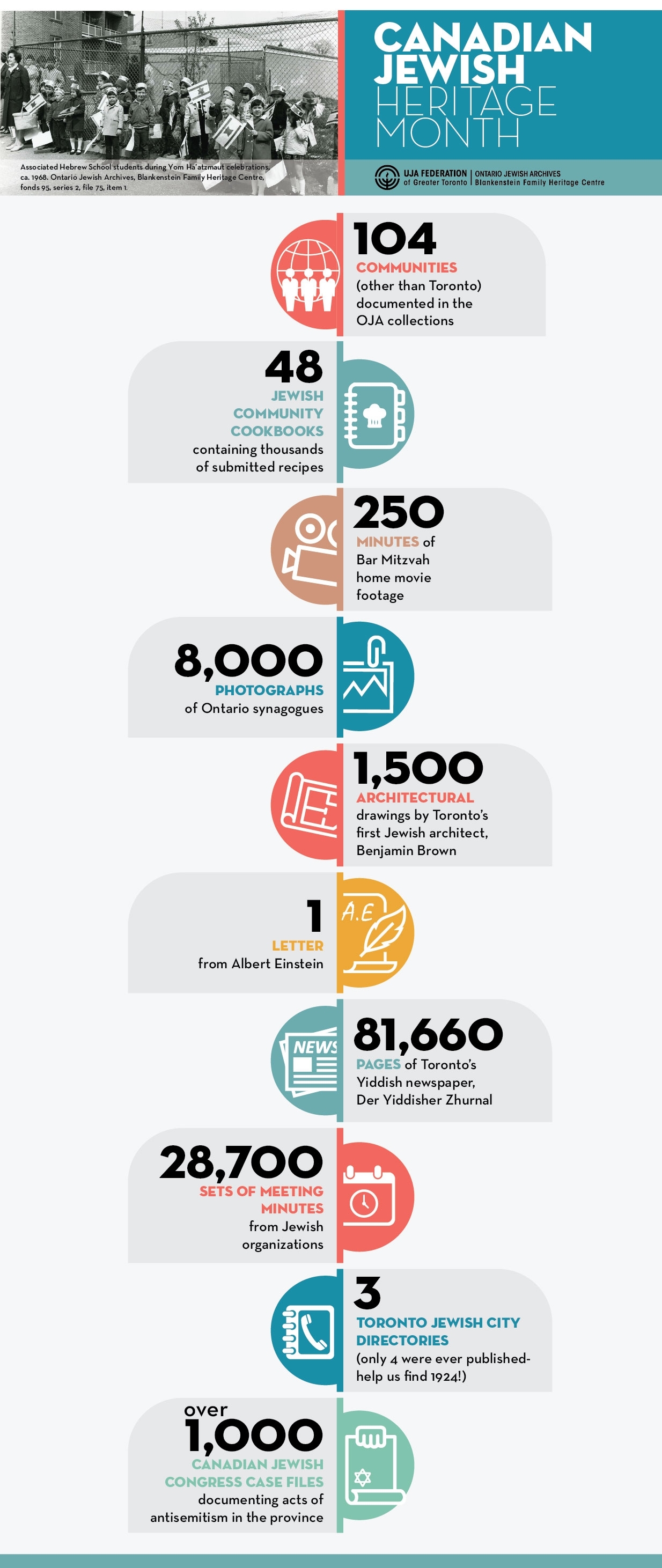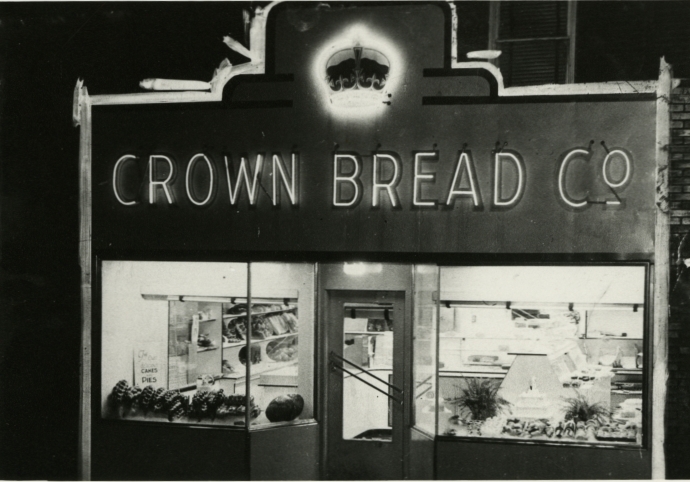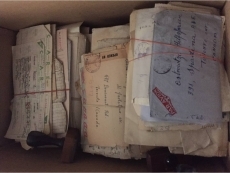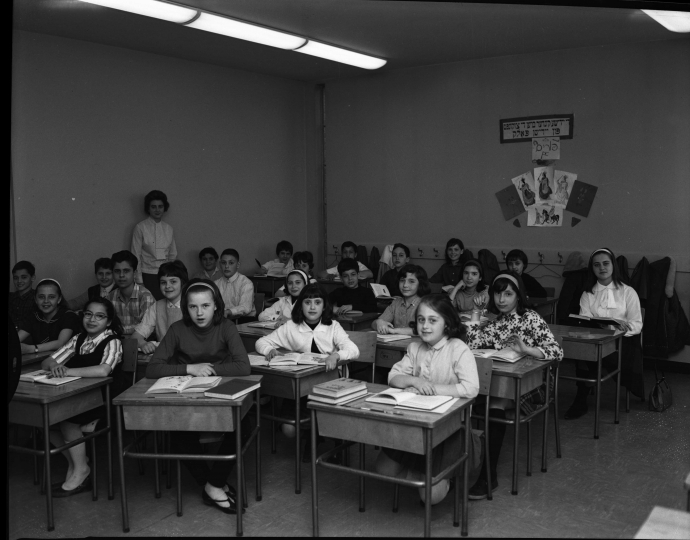Thirty-nine endnotes in the finished manuscript. One hundred and thirty two emails between the managing director and me. Three notebooks filled. A dozen videos watched. Too many photographs taken to count. One letter saying I was selected a recipient of the Dr. Stephen Speisman Bursary for 2017.
These are just some of the numbers that paint a picture of the extent to which I have benefitted from the invaluable resources of the Ontario Jewish Archives, Blankenstein Family Heritage Centre, in the research and writing of my new book “Double Threat: Canadian Jews, the Military and WWII”. The book was just released in March, 2018 by New Jewish Press, the publishing arm of the University of Toronto’s Anne Tanenbaum Centre for Jewish Studies.
It was in July 2015, when I began my sabbatical from Centennial College to write the book, that I first made my way up to the OJA offices at the Lipa Green building on Bathurst Street in Toronto. I had explained to the archivists what I was doing, namely trying to find original wartime documents that could help tell the stories of the 17,000 Canadian Jewish men and women who served in a uniform in WWII.
In the beginning, the staff set me up with family fonds, including Kate Devor’s files, where I found letters and other information from her son David “Tevy” Devor, who was killed in Italy in 1944. The boxes belonging to Howard Fluxgold’s family introduced me to his two uncles who died in the war, Zave and Sydney Brown, from North Bay, Ontario.
Eventually Donna Bernardo-Ceriz, the current managing director, brought out the vast Canadian Jewish Congress, Central Region's War Efforts Committee records and the Harry Moscoe fonds. Moscoe was a lawyer and the Executive Director of the CJC Eastern Region's War Efforts Committee during much of the war. I spent my days pouring through the yellowing typed minutes of meetings, the Congress press releases, and even the sombre news clippings when a Jewish serviceman was wounded or killed dating back from as early as 1941. It helped me get a feel for how Canada’s Jews not only served on the front lines, but also how Canada’s organized Jewish community stepped up to do their part at home. This included furnishing all the Canadian army recreation messes across the country with couches, ashtrays, radios and ping pong tables, among other amenities.
I discovered a fascinating collection of typed lists of names of Jewish military men overseas. These lists were a critical part of Congress’s comfort package operation in Ontario. At its helm was Bertha Allen, who oversaw a massive effort to collect a few dollars a month from sponsors at synagogues, women’s groups, brotherhoods, and labour organizations, in order to send parcels of goodies and cigarettes to the boys and girls who were so far from home.
Sometimes, the files produced treasures that surviving Jewish families had never seen before, such as a three page typed thank you letter from former journalist Willie Rosenthal of Montreal, written from England just before the artillery soldier embarked for the 1943 Allied invasion of Italy. He did not return.
1 March 1943.
“Getting a letter from home, and from you people, and ditto parcels, is to us here as a “bit of home”. I am not being a bit over enthusiastic when I say that getting mail from you is like seeing that Kosher stamp again. Your letter and gifts warm us as no sun has ever warmed the heart of man.”
It wasn’t only paper files that helped me paint a nuanced picture of the Jewish Canadian heroes and heroines who helped defeat Hitler and stop the Final Solution. I benefited from the extensive collection of oral history videos of veterans recorded for the “Memory Project”, including a remarkable interview with the late Dr. Joe Greenberg, who served in the RCAF, then came home to be a family doctor on Ulster Street at Bathurst until his death in 2017.
I consulted their library of videotapes (“No Greater Honour”) and books, including both volumes of Canadian Jews in WWII from 1947 and 1948, Dr. Gerald Tulchinsky’s biography of J.B. Salsberg, and books about the Ward, where thousands of Jewish families lived in poverty but from whose tenements and high schools the Canadian military would accept thousands of Jewish volunteers and conscripts. Ben Dunkleman’s fonds were the source of one of the glossy photos in my book, showing the Tip Top Tailor executive-turned-officer in uniform with the Queen’s Own Rifles.
The website’s online exhibits also were a tremendous help, as they helped me find stories about Jews in uniform from small Jewish communities, such as Saul Laskin, from Thunder Bay, who was at Bergen-Belsen. One of the days I was there I had the pleasure of interviewing the OJA’s dedicated volunteer, Bunny Bergstein, an RCAF veteran, who is also in my book.
During the course of the next two years, over email, the OJA helped me check references, put me in touch with veterans’ children, and even arranged two speaking opportunities to promote my first book. I say first, because there are years worth of military artifacts and files at the OJA that I still want to research, and who knows what stories these will help me tell one day?

![Major Ben Dunkelman with unknown soldier, [ca. 1944]. Ontario Jewish Archives, Blankenstein Family Heritage Centre, fonds 2, series 6, file 100, item 1.](https://ontariojewisharchives.org/cms_uploads/images/F2_s6_f100_i1-copy1.jpg)



